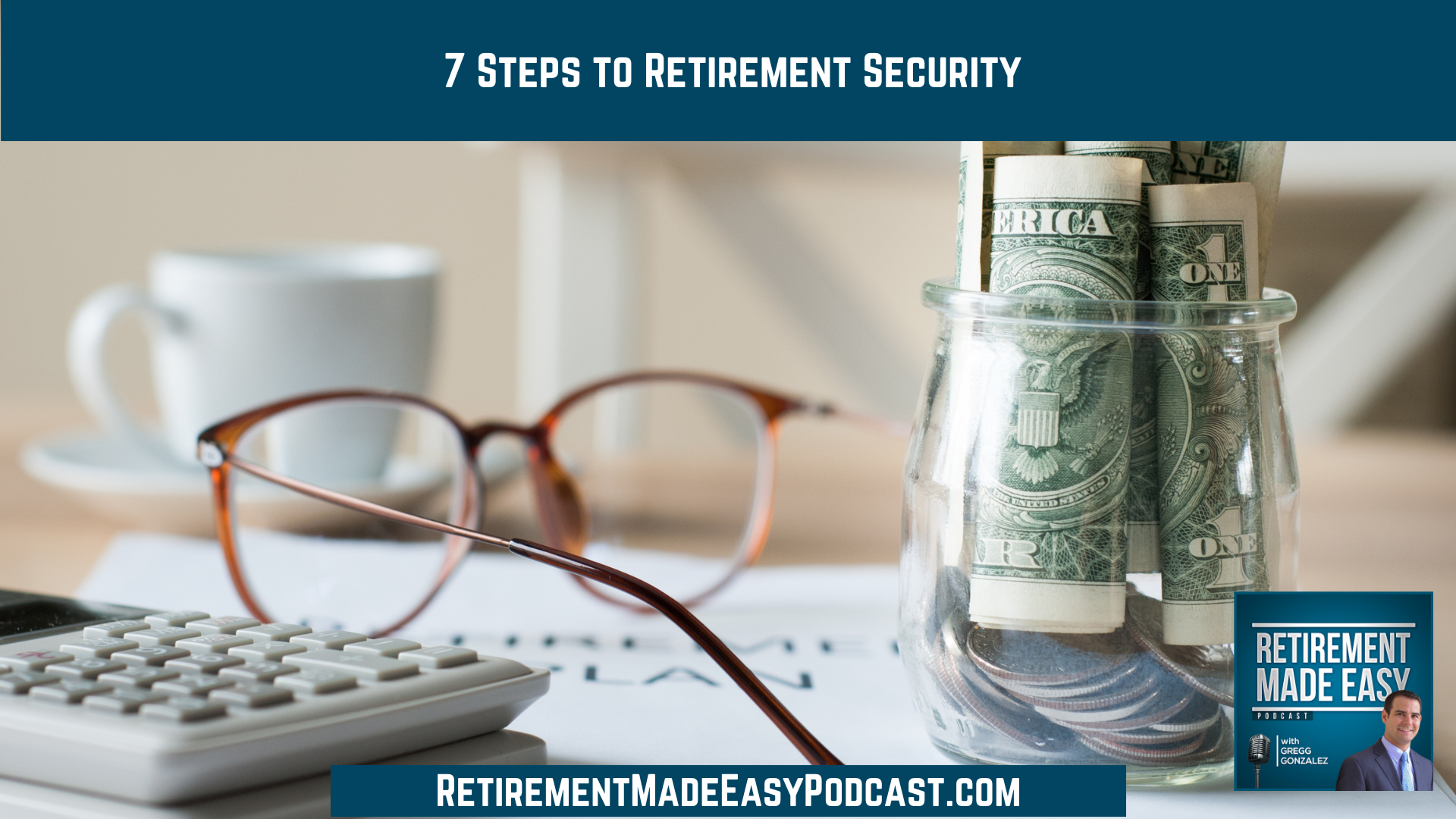
Over the last two months, we’ve had close to 8 people contact us to put together a retirement plan because they’re fearful of being downsized. If they got laid off, could they afford to retire? People are looking for peace of mind and a retirement plan helps cover the what-ifs in life.
Tom Hegna wrote the book, “Don’t Worry, Retire Happy.” In it, he brings up some good points when it comes to retirement planning and what to be aware of. I tweaked his methodology to make it my own. So in this episode of the Retirement Made Easy podcast, I’ll cover the 7 steps you need to have a secure retirement.
You will want to hear this episode if you are interested in…
- [0:28] Why you need a retirement plan in place (and how we can help you)
- [6:11] Step #1: Get a retirement plan in place
- [8:05] Step #2: Maximize Social Security benefits and pensions
- [8:45] Step #3: Consider a hybrid retirement
- [10:40] Step #4: Account for inflation
- [14:51] Step #5: Protect your dollars from taxes
- [17:30] Step #6: Have a plan for long-term care
- [18:46] Step #7: Use your home equity wisely
Get a retirement plan in place
A retirement plan will tell you how much money you can spend in retirement, what taxes will be like, how long your money will last, and the rate of return you need for your plan to be a success. I’ve told many people they’re being too conservative with their money. If you’re living on $100,000 a year in retirement, we have to figure out where all of that money is coming from. A plan comes up with a tax-efficient withdrawal strategy.
Consider a hybrid retirement
I encourage many clients to plan a hybrid retirement, where they work a part-time job when possible. Why? If you’re able to work part-time doing something you enjoy, it puts less pressure on your investment portfolio.
If you can make $20,000 a year working part-time, that’s $20,000 you don’t have to withdraw from your nest egg that can compound and grow. If you delay your social security benefit for one year it will grow 8%, giving you more monthly income to work with when you do start taking benefits.
Account for inflation
People are finally feeling the impact of inflation and I’m sad to say, it’s here to stay. What $1 will buy today is the most it will ever buy in your lifetime. The “dollar” menu doesn’t exist at McDonald’s anymore. It’s a $2 menu. Soon, it’ll be a $5 menu.
We’ve got to consider how inflation will impact your retirement plan. If your costs go up 3% per year, the money you’re living on also needs to increase at least 3% per year. Your retirement plan should account for a rising cost of living.
Protect your dollars from taxes
I’m married to a CPA. I have a bachelor’s in accounting and am a certified financial planner. I have a good grasp of tax planning. I’ve witnessed too many people throw money down the drain because they’re paying more taxes than they need to, often because they don’t have anyone to guide them. If you’re retired for 30 years, those excess taxes can add up.
Let’s say someone is retired and does Roth conversions and says, “Whatever the taxes are, I’ll just pay them.” That may cause them to have to pay capital gains on a brokerage account. They may pay more on social security. They may be hit with a Medicare IRMA tax. Their Medicare Part B premium may climb to an outrageous amount. It may bump them up into a higher tax bracket.
That’s why tax planning is an important part of building out a retirement plan and it can’t be neglected.
Listen to the whole episode to hear all seven important steps you should follow to guarantee a successful and secure retirement!
Resources & People Mentioned
Connect With Gregg Gonzalez
- Email at: Gregg@RetireSTL.com
- Podcast: https://RetirementMadeEasyPodcast.com
- Website: https://StLouisFinancialAdvisor.com
- Follow Gregg on LinkedIn
- Follow Gregg on Facebook
- Follow Gregg on YouTube



